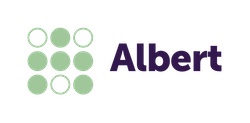We touched on this in another publication: having up-to-date, high-performance skills repositories has long been a snake in the grass, so much so that many companies gave up in the middle of the process: too complicated to create, obsolete as soon as they were released, not used enough.
But it was also in the mid-2010s that several visionary entrepreneurs launched the idea of dusting off competency mapping.
10 years on, how would you assess the results? Have HR consultants been “replaced” by Artificial Intelligence, or is there still a place for natural, organic intelligence?
The pioneering era
The year is 2014. Bénédicte would like to change careers, and is collecting data on Linkedin to see what others with her profile have been able to do. Olivier, for his part, is passionate about the collaborative economy and believes that know-how can be shared. Finally, Loïc is astonished that his consulting firm does not take into account the skills of its consultants when staffing them.
These three entrepreneurs respectively founded Clustree (bought out in 2020 by Cornerstone), eLamp (bought out in 2023 by 360 Learning) and 365 Talents, which is still going strong. It may seem paradoxical on the surface: why such a wave of startup creation when the subject of skills seemed to have fallen into disuse? The answer lies in a soup of letters: ML, GDB, NLP, NLG, LLM.
Numerous technological innovations
ML (Machine Learning), GDB (Graph Database), NLP (Natural Language Processing), NLG (Natural Language Generation) and LLM (Large Language Modeling). What all these data-driven technologies and the processing of text by algorithms or AI have in common is that they have suddenly made something extremely tedious possible.
Indeed, if we return to the essence of the problem of skills repositories, these startups have cleverly used technology to get around the inherent problems:
- “It’s complicated to create, to consolidate, to maintain”. Not surprising, since it’s all text. The word and the idea are sometimes different and lead to great variability: if I say “JS” or “Javascript”, I mean the same thing with two different formulations. And consolidating text requires considerable effort. Automating this task saves a HUGE amount of time when the promise is kept;
- “It’s obsolete as soon as it’s released”. This is also one of the virtues of a digital solution, namely its persistence and historization, which enable it to be tracked over time. What’s more, automation means less effort, and therefore more regular updates;
- “We don’t know what it’s for”. It has taken several years for the use cases to become clear, and each company in this niche has oriented its product differently, but let’s mention Talent Marketplaces, staffing, skills directories, Career Paths… The diversity of uses has led 365Talents, for example, to prefer the term Talent Experience Platform, so as not to lock their product into a single situation.
We’re living in extraordinary times. So, thanks to AI, all we have to do is plant skills in autumn and watch them grow until spring, without leaving our sofa and saving on consulting fees?
Well, not quite.
The importance of augmented consultants
Work on skills and competency frameworks has not disappeared, however. However sophisticated these platforms may be, they are “only” technological objects. They facilitate the processing of unstructured data, they collect and consolidate data, they can offer some analysis, but they are only decision-support tools, “sensors”, not “actuators”.
And this is where consultants add value: by selecting what is strategic for tomorrow. A good repository does not contain 60,000 skills, but a few hundred at most. And a good consultant avoids unnecessary effort: if technology can help, it will.
And what about the SWP?
A platform like 365 Talents is a tremendous asset for the companies that use it. It facilitates mobility, matches development needs with training provision… All things that could only have been dreamt of 15 years ago.
But it can’t – and that’s normal – know the company’s strategy, its economic or social context, or its future trajectory. And yet, in the creation of a repository, whether for a profession or for skills, there is an intentionality. As soon as it is created, we send out a message by the way we identify the professions, and by the “future” professions we choose to incorporate. These professions may not exist today, and their skills may not exist within the company, but they still need to be defined as part of a GPEC or Strategic Workforce Planning process, for example.
This is where a SWP solution can be perfectly combined with a Talent Experience Platform to add a dynamic, forward-looking dimension to an already comprehensive picture. For example, many Albert customers also use 365 Talents, because the two solutions are technically “interoperable”, and feed off each other.
Another way of looking at it is to say that TXP addresses the subject of jobs and skills through the prism of the employee, whereas SWP tackles it through that of the business. The two, of course, meet in the middle and multiply their effect. Don’t hesitate to contact us for more information.

